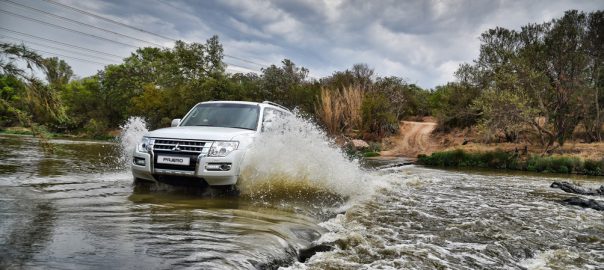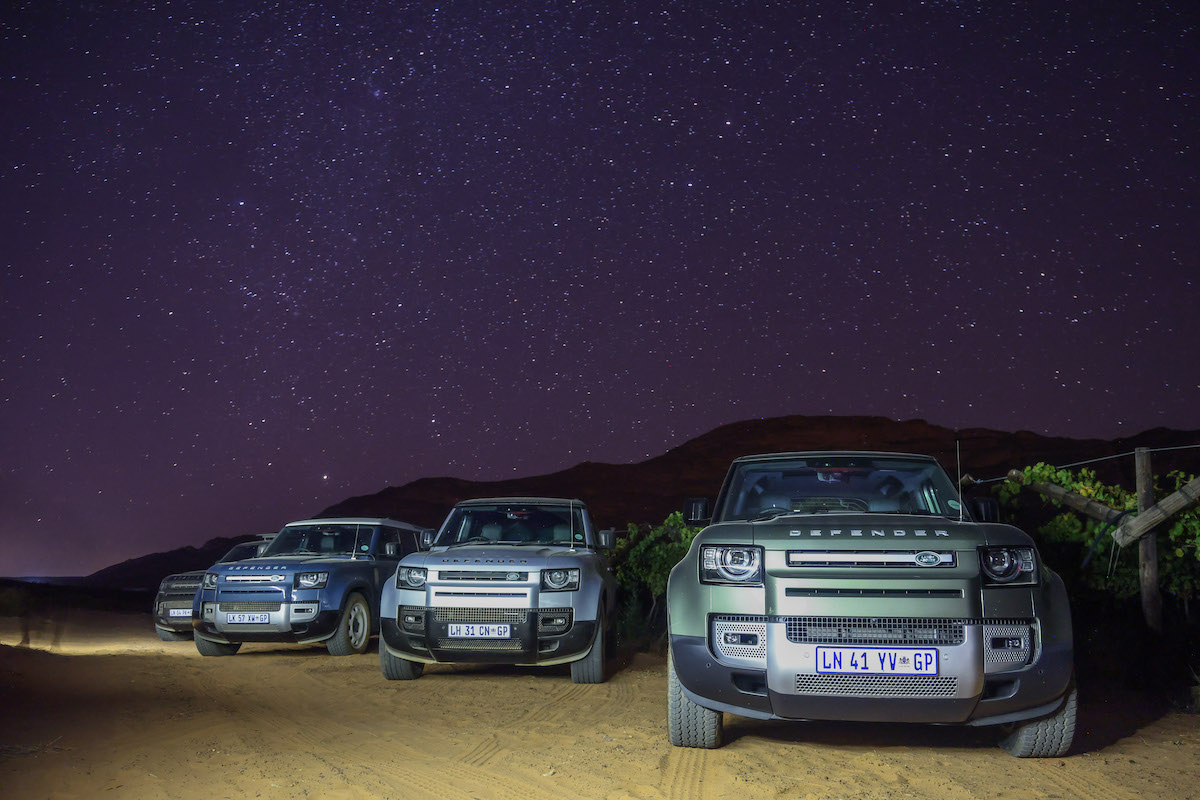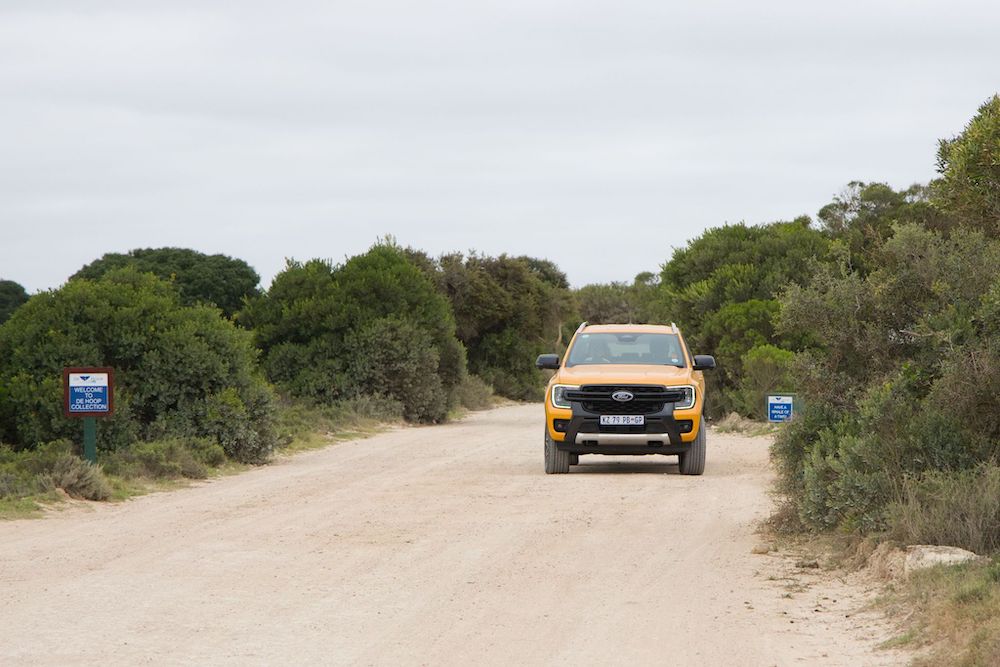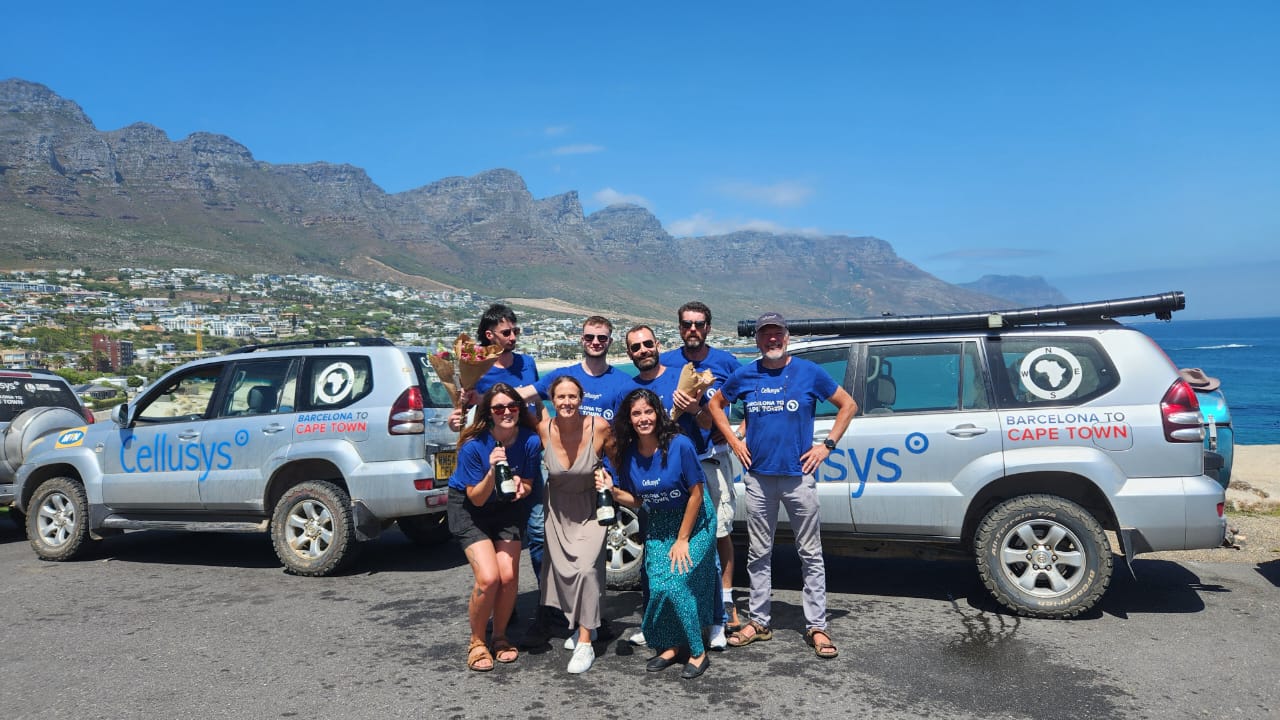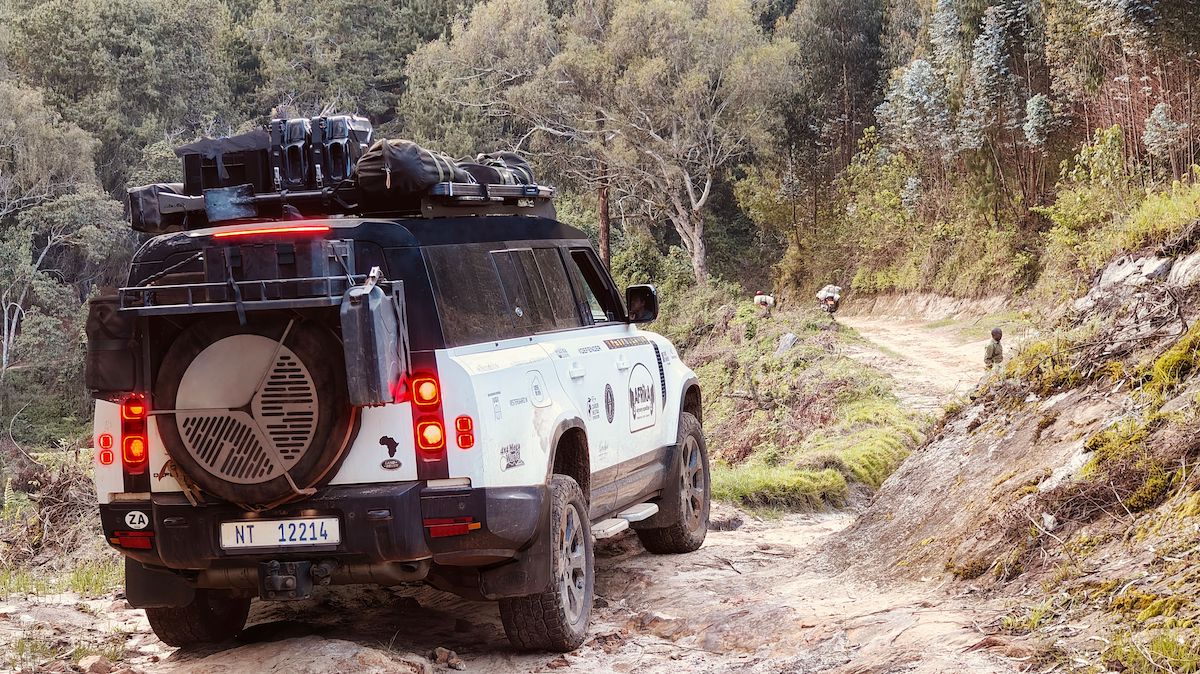My octogenarian stepfather, Harvey, had cabin fever. Having been holed up in his study for weeks, battling with the “confounded new program my computer lady installed recently”, he was in need of some bush time.
I had the perfect antidote in mind — a trip from Hermanus to the Eastern Cape, through the rugged Baviaanskloof and beyond. All I needed was the right vehicle.
My media vehicle supplier asked if a Pajero DI-DC GLS Exceed would be suitable. “Hell, yeah!” I replied. With 12 Paris-Dakar wins to its name, I felt certain the Pajero would handle the Baviaans with ease. In fact, when the vehicle arrived, I felt strangely intimidated by its rally pedigree emblazoned all over it. Would my driving skills really test the abilities of this classic off-road machine?
My plan for our four day sojourn was to cover the long distances on day one and day four, mostly on tar, and take a leisurely cruise through the Baviaanskloof on day two. We’d proceed over the Elands River road, crossing the Groot Rivier back to Uniondale on day three and then return to Hermanus on day four. I felt confident that this mix of around 1400km on tar, gravel and some reasonably exciting 4×4 tracks, with numerous river crossings, would give me a good idea of the Pajero’s overall capabilities.
But, after only about 100km of the highway I decided to bail out of my earlier plans and aimed the Pajero at the Kliphoogte dirt track, which takes you over the Breede River near Drew, and then on the back route into Swellendam. This allowed me to select 4-High, and the resultant increase in the Pajero’s active footprint gave me the confidence to test the limits of this heavy vehicle’s stability and traction control systems.
I was so absorbed in this activity that I only noticed Harvey asking me stop the car when he poked me in the ribs. Thinking some tragedy had occurred, I braked hard and we came to a rapid yet civilised stop, the ABS and EBD systems ensuring the minimum of skid. It was then that I noticed the binoculars glued to his eyes. He was studying a large bird of prey in the beige stubble of a harvested wheat field — an immature martial eagle, it turned out.
After reaching Swellendam, we stuck to the tar, passing through Suurbrak; the magnificent Tradouw Pass; Barrydale and Oudtshoorn en route to our next dirt track outside Dysseldorp, near De Rust. I’ve tackled this back road a number of times on my adventure motorbike, but never in a car, and I was looking forward to the experience.
Sandwiched between the lofty heights of the Kammanassie Mountains in the north and a lesser range in the south, this 75km dirt track detour is well worth experiencing. The road passes through a great variety of undulating Little Karoo scenery and tracks through many engaging, aloe-covered kloofs on its way to the junction with the N9 outside Uniondale.
After filling up the Pajero in Uniondale, I calculated we were using just under 10 litres of diesel per 100 kilometres, which was pretty good seeing that more than half the journey had been on tar at higher speeds. Yet, overall, I had been driving quite conservatively, which goes to show that, driven economically, this capable piece of leisure equipment could also serve as a “mom’s taxi” during the week, without breaking the bank.
“Wow, Nick, this is pretty impressive,” remarked Harvey, craning his neck to appreciate the sheer sandstone walls of the Nuwekloof Pass through the sunroof. Apart from these impressive slab-like edifices, this pass is a good place to see the ancient Willowmore cedar (Widdringtonia schwarzii) which is more or less endemic to the kloof.
Remembering stories I’d read about Model-T Fords — they had gravity feeds from petrol tank to carburettor — having to reverse up this and other passes in the kloof, I was thankful for the modern technology at my fingertips. But even though we’d had a most comfortable ride in our leather-upholstered transport, Harvey and I were glad to arrive at our accommodation for the night — one of a number of house-fronted grottos known as Makkedaat Caves in a side-kloof on the farm, Rietrivier.
I was pleased to be able to introduce Harvey to the marvels of Baviaanskloof for the first time. It is a place with a wealth of treasures to share with those who take the time to look for them. From paleontological finds to unusual combinations of fauna and flora, unique geological phenomena, cultural traditions, historical events and scenery that is as rugged as it is breathtaking — there really is something for everyone.
On a short drive up the side-kloof next morning, we took in the riveting tableau of the ancient landscape — the multi-hued mixtures of evergreen vegetation, reddish-brown enon conglomerate and folded sandstone mountains with dazzling colours.
I was taking Harvey to a cave known as Swaeltjiesnes. It houses a unique “museum” of natural history — a large, flip-top table encasing rows of animal droppings, skulls, egg-shells and information leaflets describing much of the local fauna.
On the way we encountered our first bit of thick sand and even though I could feel we should have deflated the tyres, the Pajero made it through easily. I was eager to get started on the day’s drive of around 120km through some of the Eastern Cape’s most scenic mountain passes, and also to see how the vehicle would cope with the many long and often deep water crossings.
But, in general, the road up to the reserve gate presented few challenges and the first 60km were a breeze. Of course, if you’re very unlucky and get caught out in a narrow kloof (like the one just after Studtis) in the aftermath of a torrential downpour, as happened in 1916, the floodwaters could wash you away, no matter what vehicle you’re in. (A grim reminder of the importance of obtaining weather forecasts before traversing this kloof.)
Driving around the park-like picnic grounds at Smitskraal, taking in the variety of wandering antelope, Harvey and I thought we’d discovered a dead baboon lying in the road. But as we approached, it jumped up indignantly and took flight — it was just having a nap.
Then we got our first taste of a lengthy water crossing. At around 70m long, this submerged roadway can be quite intimidating for the uninitiated, but with the Pajero’s air-intake sitting around a metre above ground level, I wasn’t too concerned. Yet, soon afterwards, on a side-trip to see the beautiful campsites on the banks of the Kouga River at Rooihoek, we really got a sense of the Pajero’s off-road capabilities.
Because the entrance road descends steeply and is criss-crossed with deep ruts, I engaged 4Wlc (4-Wheel High with the central differential locked), slotted the gearshift into first and let the 441 Nm of torque take us down the slope. Apart from the reassuring braking of the 140 kW engine, it was some judicious steering and the Pajero’s lofty ground clearance (235mm) that saw us through without scraping the undercarriage in this rough section.
Harvey had been a navigator during the early years of the Roof of Africa rally and had the experience of various 4×4 forays into the Kalahari under his belt, so I offered him a chance to drive the Pajero as soon as I thought we were over the most challenging sections in the reserve. As an additional safeguard (the R 670 000 vehicle was my responsibility), I slipped the gear selector into manual and helped him with the gear changes.
But I had totally underestimated the length and severity of the drive remaining to the reserve’s eastern gate, and only realised later that I had handed over the reins to Harvey when we still had to traverse the difficult Holgat and Combrink’s passes. Of course, I didn’t mention this at the time, and besides, he was coping well.
Along the way we stopped to take photographss and identify game in clearings in the otherwise dense bush. We saw many kudu, hartebeest, baboon and zebra, but unfortunately no buffalo or rhino.
On our way past Bergplaas, we considered the remarkable achievement of long-time Baviaanskloof farmer Winston le Roux. Faced with three-and-a-half hour drives to convey produce from his farm, Enkeldoorn, to his more accessible Good Hope farm, Le Roux erected a cableway across the 400m span of the 386m-high Waterpoort Gorge. Some of his neighbours thought he had no hope of succeeding, but he did. The end result was that he could shift five tons in 15 minutes, saving huge amounts of time and vehicle running costs.
As we descended Combrink’s Pass, I smiled to myself as I remembered the name given to this steep ascent by the early travellers when they approached it from the eastern side. Known as Poepsloot, the name aptly described “flatulence coming from oxen straining to pull the wagons up the steep incline”.
Even cocooned in our luxurious transport, the day’s drive had been a long and challenging one, and we were both pretty worn out by the concentration required. While rewarding our successful stint with a few cold beers around the braai fire at Kudu Kaya that night, we received some worrying news from our host. She warned us that the Grootrivier we hoped to cross the next day was in flood and that we wouldn’t be able to cross it.
Determined as we were to avoid long stretches of tar, there was only one thing for it — we would have to head back the same challenging way we had come in!
“Baviaanskloof twice in 30 hours — now there’s a test for man and machine,” observed Harvey. “Perhaps we’ll get to see some rhino on the way back.”
Baviaanskloof facts at a glance
Transit distance: Nuwekloof Pass to Cambria — 135km
Transit time: Allow at least eight to ten hours
Petrol availability: Kleinpoort Garage and General Dealer, between Studtis and Sandvlakte
Reserve gate opening and closing times: 07h00 and 16h00
Cost of reserve transit permit: R20 per person
Passes to cross: four in total – Nuwekloof, Grasnek, Holgat and Combrink’s
Road conditions: The road in the reserve has deteriorated badly since I visited five years ago. If routine maintenance is not carried out soon it may become impassable in certain places, in particular for campervans and high-rise 4x4s with roof tents that will battle to clear a number of overhanging branches. The good news is that the authorities are upbeat about their recent discussions with the roads department concerning the allocation of funds that will allow them to maintain the section of the R332 that passes through the reserve.
Designated picnic spots en route: One — Smitskraal
Accommodation options: Caves, treehouses, upmarket guest houses and lodges – go to www.baviaans.co.za
Mitsubishi Pajero DI-DC GLS Exceed. LWB Auto 4×4
Impressed with:
Comfortable, ergonomic cabin; easy-to-use entertainment/phone and information interface; superb sound system; excellent build quality and dust-sealing; powerful and responsive engine (140kW and 441Nm torque); reasonable fuel economy (around 10l/100 km, driven conservatively under varied conditions); ease of driving; good handling on all surfaces tested and flexibility of seating/storage arrangements.
Not so impressed with:
No small fridge in console between front seats!
